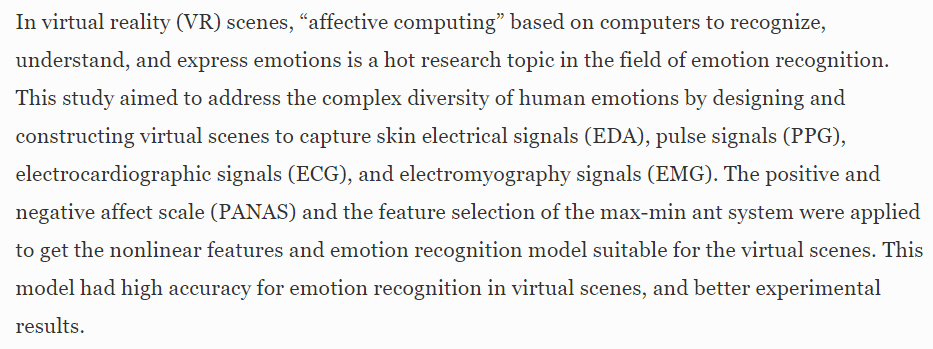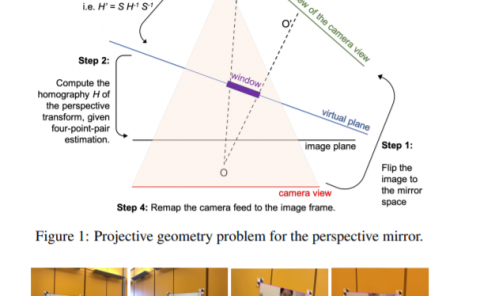Users’ Emotion Recognition in Virtual Scenes Based on Physiological Features
PubDate: May 2021
Teams: Hangzhou Dianzi University
Writers: Yang ChenLichan ZhangAnda YongYan ZhuQiang Wang
PDF: Users’ Emotion Recognition in Virtual Scenes Based on Physiological Features

Abstract
In virtual reality (VR) scenes, “affective computing” based on computers to recognize, understand, and express emotions is a hot research topic in the field of emotion recognition. This study aimed to address the complex diversity of human emotions by designing and constructing virtual scenes to capture skin electrical signals (EDA), pulse signals (PPG), electrocardiographic signals (ECG), and electromyography signals (EMG). The positive and negative affect scale (PANAS) and the feature selection of the max-min ant system were applied to get the nonlinear features and emotion recognition model suitable for the virtual scenes. This model had high accuracy for emotion recognition in virtual scenes, and better experimental results.


